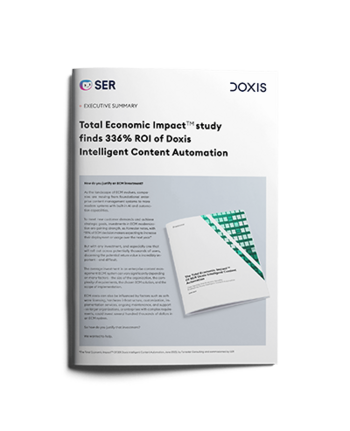SER Blog Customer Stories & Use Cases
The cost center - why it is the key to the ideal P2P process
Businesses sort their expenses based on where they pop up, using what's called cost centers. This makes it easy to track where the money's going. Knowing this helps them figure out if their purchase-to-pay processes (P2P processes) are cost-efficient and where they might need to tweak things to save some cash.
Keep reading to learn about how organizations use cost centres to make P2P processes more cost-efficient.

What is a cost center?
A cost center is an organizational area within a business. Organizational areas include departments such as administration, production, marketing, logistics, or sales. Locations, as well as cross-company or internal departmental projects, can also be cost centers.
Specifically, cost centers are divided according to the following criteria:
- Spatial aspects
- Function
- Areas of responsibility
- Projects
Functions and objectives of cost centers
A cost center provides information about where costs arise in the business, setting them apart from other areas. Based on the cost center, it’s immediately clear which area of responsibility the outstanding receivables fall into. This makes cost controlling easier, and thanks to the transparent allocation, you can see how cost-efficiently the organizational area is running, and where action is required. What’s more, a cost centre makes it a lot easier to to plan and monitor budgets.
At the same time, the requisite data is are available to positively shape budget decisions. As a result, departments can work more cost-efficiently because they’re able to immediately recognize cost drivers and savings potential in processes. This fulfills the overarching corporate objective of cost centers: to optimize profitability across all organizational areas.
Differentiation from other cost objects
The term cost center appears, for example, during invoice processing on invoices or receipts. In addition to cost center, the cost type and the cost object are also terms used in accounting. They are all related to each other, but do not mean the same thing. They have the following functions:
- Cost centers divide costs according to their origin: for example, departments, locations, or projects.
- Cost types divide costs according to their type: for example, procurement costs such as material costs or transport costs.
- Cost objects divide costs according to end objects: for example, products that a business makes and sells.
In other words, cost centers show you where costs are incurred, and the cost types show you in what form they arise. Cost objects then relate to the cost center and the cost type by providing information about which end product in the company you can allocate costs to. However, this only works for primary cost centers.

The case for a smart, automated purchase-to-pay process
Optimize cash flow & supply chain efficiency in purchase-to-pay processes – this white paper shows you how.
Read nowTypes of costs centers and their structure
Within a business, cost centers are divided into primary cost centers, secondary cost centers, and service cost centers.
Primary cost centers
Primary cost centers are all the cost centers that serve an operational purpose for the business. This includes all the costs for a business to make or sell a product. Cost centers are then divided into, for example, the production cost center, the administration cost center, the transport cost center, or the materials management cost center.
Secondary cost centers
Secondary cost centers, on the other hand, are areas of the organization where secondary products are created. They are not involved directly in the primary value creation of a business. They provide their services to all the other cost centers in the company.
This means they play a supporting role, or more accurately: they are service providers. Examples include costs for security services, fleet management, building management and engineering or janitorial services.
Service cost centers
In addition to the two main types of cost centers, there are also service cost centers. These provide their services to a primary cost center. While you can assign primary cost centers directly to a cost object, costs in this case are allocated indirectly.
Creating a structure for cost centers
A cost center plan can help to divide costs in your business into primary, secondary, and service cost centers. These are organized hierarchically. First, define cost areas at the highest level. Depending on the size and branches of a company, these are either locations, functions or departments. The highest level of cost centers are, for example, the corporate departments of administration, production, sales, and human resources.
In the second step, the subdivision begins. Now divide the costs of each business area into the respective activity areas. For example, production is divided into the cost centers production, materials management, marketing, and procurement.
This results in a cost center structure. For example, it might look like this:
- Cost center administration > sub-cost center business > subordinate sub-cost center business registrations
- Cost center manufacturing > sub-cost center software > subordinate sub-cost center software implementation
- Cost center sales > sub-cost center trade show > subordinate sub-cost center trade show booth
- Cost center HR > sub-cost center recruiting > subordinate sub-cost center active sourcing

Executive Summary: Total Economic Impact™ study
Long-time customer SEW-EURODRIVE achieved a 336% ROI over a three-year period and a payback in less than six months. We have summarized the study results for you.
Read nowThe role of cost centers in controlling
The aim is to divide cost centers in such a way that the costs for each individual cost object are ultimately presented transparently.
When this happens, cost centers are an important tool for controlling. They show potential for improvement in budgeting and influence business decisions. For example, controlling can use cost centers to identify whether a business needs restructuring in order to operate cost-efficiently or whether fewer staff would be possible. Cost centers often also show how you need to redistribute budgets so that processes are maximizing profit. This can be seen in cost center accounting.
Cost center accounting compares actual costs and the performance of a product. This determines the success of a product, i.e. its economic viability for the business.
Allocating cost centers: Methods
Cost center accounting organizes cost centers according to different methods. First, there is the allocation of overhead costs. In this step, businesses allocate overhead costs, i.e. costs that cannot be assigned to a specific product or area.
These are the methods used by businesses to calculate these shared overhead costs:
- Key method: The allocation keys determine the ratio in which the costs are assigned to the various cost centers.
- Average method: The overhead costs are distributed in the same ratio across all relevant cost centers.
In contrast, there is the internal service accounting. These are costs that derive from services that different business areas provide for each other. There are also several calculation methods for internal service accounting. Some examples include the following:
- Cost type method: The costs for internal services provided are assigned directly to a primary cost center.
- Ladder method: The upstream cost centers allocate costs to downstream cost centers, whereby each upstream cost center only passes on services to downstream cost centers.
Optimizing cost centers: How it works
Each cost center contains various cost types that should be evaluated in detail. This analysis helps you understand the proportion each cost type contributes to the total costs. For example, when you assess the procurement process, the insights can lead to optimizations that make the entire purchase-to-pay process more efficient and profitable. For example, when evaluating the procurement process, you might come across a widespread phenomenon – maverick buying. This refers to purchases made by employees outside of standard channels, where they buy without properly notifying the purchasing department. There are many control levers here, with one option being to automate manual processes so that workflows are standardized. This minimizes “wild” purchasing activity and increases productivity across all steps – from purchasing to invoicing.
Practical applications and benefits
Cost centers have an end-to-end impact on value chains in a company. They do the following:
- Improve cost transparency and control,
- support budgeting and financial planning, and
- influence strategic decision-making.
Ideally, costs can be controlled from the moment they arise – at purchase. Doxis Intelligent Purchase-to-Pay Automation makes exactly that possible. The solution standardizes and automates procurement processes across the business. Provided that the costs are categorized in cost centers.
Importance of the cost center in the P2P process with Doxis
Hey Doxi, how do P2P processes work in Doxis?
- Step 1: Doxis automatically extracts every inbound invoice. Doxis stores all information, including the cost center, in a structured manner.
- Step 2: Doxis launches any number of workflows, depending on the cost center. Because the cost center indicates the business area responsible for approving the invoice. This means Doxis always finds the right contact person. Doxis automatically identifies the correct department and the employee responsible for approval.
- Step 3: Doxis works with authorization concepts and representative rules. If the responsible processors are absent in the workflow, Doxis automatically passes the invoice approval to the representative role. The person takes over the invoice approval process until the employee returns from vacation or sick leave.
- Step 4: Doxis assigns the invoice amount of released and posted invoices to the respective cost center. This improves the overall overview of the expenditure of this cost center.
- Step 5: Doxis automatically stores the invoice in the proper digital file. Using filter functions such as “cost center” or “invoice number” you can easily find the invoice at any time.
Use cost centers to create more value in processes from purchasing to accounting
In accounting, cost centers indicate where costs have arisen in the business. Most cost centers can be assigned directly to a cost object. First, the comparison shows businesses how cost-efficient a cost object is for the entire company. Second, cost centers in controlling show areas where improvements are needed in order to optimize the total value creation of the cost object.
Tools such as Doxis Intelligent Purchase-to-Pay-Automation rely on automated and standardized workflows. Procurement processes are less prone to errors and are achieved more quickly. In short, processes are cost-efficient again.
FAQs about cost centers
The latest digitization trends, laws and guidelines, and helpful tips straight to your inbox: Subscribe to our newsletter.
How can we help you?
+49 (0) 30 498582-0Your message has reached us!
We appreciate your interest and will get back to you shortly.




